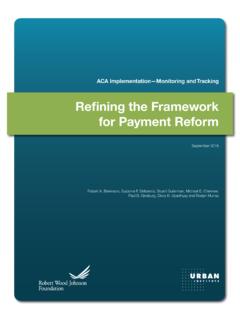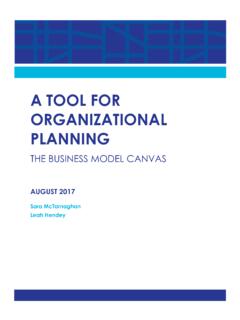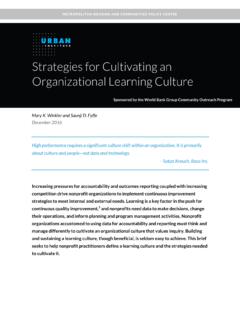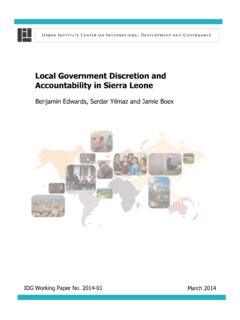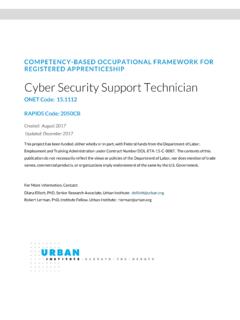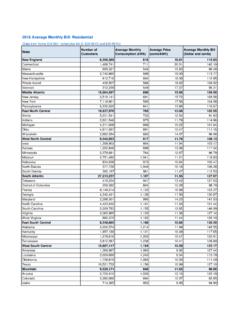Transcription of THE URBAN INSTITUTE Fact Sheet
1 THE URBAN INSTITUTE Fact Sheet Office of Public Affairs, 2100 M STREET NW, WASHINGTON, 20037 (202) 261-5709; WORKING FAMILIES: FACTS AND FIGURES Assessing the New Federalism August, 2005 The vast majority of low-income parents today are working but still struggling to make ends meet: struggling to find and keep a toehold in a changing labor market, to keep up with their bills, to pay the spiraling costs of essentials like health care and housing, and to raise children with a chance of future success. These families have much in common with other American families as they seek to balance work and family life, yet parents and children in low-income families are more financially vulnerable than those in higher-income families.
2 One-quarter of America s children live in low-income families with a working parent. In 2001, almost 19 million children lived with parents who worked regularly in families that remained low-income (income below twice the official poverty threshold, or about $38,000 for a family of four). Of all low-income families with children, 6 in 10 have at least one parent who worked full-time all year, and another 1 in 10 have a parent who worked at least half-time all year [figure 1]. Low hourly wages explain why these working families have low incomes. The vast majority of a low-income family s income comes from earnings (89 percent for a low-income family with at least one full-time, full-year worker).
3 Yet, the median hourly wage for the primary worker in these families is about $9. If these workers see their real wages grow 4 percent per year, it will take 11 years to reach the $14 average hourly wage for middle-income families (income between two and three times the poverty threshold). Low-income working families receive fewer job benefits than middle-income families. Low-income families with at least one full-time worker are much less likely than middle-income families to receive health insurance through an employer (49 versus 77 percent). Almost one in ten of these high-work low-income families report postponing needed medical care during a 12-month period for lack of health insurance or money.
4 And, low-income working families are less likely to have paid vacation or sick leave than higher-income families, making it more difficult to juggle work, family health, and well-being [figures 2 and 3]. Low-income working families face greater food and housing hardships. Over one-quarter of low-income families with a full-time worker experience hardships related to food and housing [figure 4]. Forty percent of moderate-work, low-income families (those without a full-time worker but still working a substantial number of hours) report food and housing hardship.
5 Child care can be a large expense for low-income working families in which the mother works. Sixty-nine percent of children under age 5 with low-income working mothers are cared for regularly by someone other than a parent. Thirty-nine percent of these children are in care for at least 35 hours a week. High-work, low-income families that pay for child care spend $3,135 per year on average, or 12 percent of income. While the heads of low-income working families are likely to be younger and less educated than those of middle-income families, the large majority is over age 30 and has at least a high school education.
6 Of the heads of high-work, low-income families, 72 percent have at least a high school education and 76 percent are over age 30. 1 Compared to middle-income working families, low-income working families are disproportionately nonwhite and immigrant, although most are headed by native-born, white, and non-Hispanic adults. High-work, low-income families are less likely than their middle-income counterparts to be headed by a citizen (69 versus 85 percent). And high-work, low-income families are almost three times more likely than middle-income families to have noncitizen heads (27 versus 8 percent).
7 Health problems are more prevalent among low-income working families. Sixteen percent of full-time workers heading low-income families report fair or poor health, compared with 7 percent of workers in middle-income families. Low-income adults working a moderate amount are even more likely to have health problems, with 25 percent reporting fair or poor health. Health problems may be contributing to their limited hours of work. Low-income families are also more likely than middle-income families to have a child in poor health. On average, children in low-income households fare worse than children in higher-income households on a host of indicators.
8 Low-income children are more likely than higher-income children to live in stressful home environments and with parents reporting symptoms of poor mental health. Among school-age children and adolescents, those living in low-income families are less likely to be highly engaged in school activities and more likely to exhibit high levels of emotional and behavioral problems. With the job-market downturn, families are working less and have lower Labor markets have slacked considerably since early 2001. Between 2000 and 2003, the number of people in low-income families with children increased from 30 to 32 percent of the population, and the proportion of all households with a full-time, full-year worker fell from 88 to 85 percent.
9 Single-parent households were hit especially hard; they bore 37 percent of the loss in full-time, full-year employment while receiving only 8 percent of the increase in unemployment insurance benefits. Few low-income working families receive welfare benefits; half receive help with a parent s or child s health insurance. Only 5 percent of all low-income families with a full-time, full-year worker receive Temporary Assistance for Needy Families benefits. Fifty-two percent of these families have public health insurance coverage, reflecting a decline in employer-sponsored coverage, the creation of the State Children s Health Insurance Program, and many states decisions to expand Medicaid eligibility.
10 Additional information on low-income working families and the challenges they face will be featured in a forthcoming Low-Income Working Families publications series. The series was developed in response to the Working Families Policy Agenda Roundtable, convened by the URBAN INSTITUTE in May 2005. Data presented here are for the most part from Working to Make Ends Meet: Understanding the Income and Expenses of America s Low-Income Families by Gregory Acs and Austin Nichols (forthcoming); Toward a New Child Care Policy by Dave Edie (forthcoming); Who Are Low-Income Working Families?
